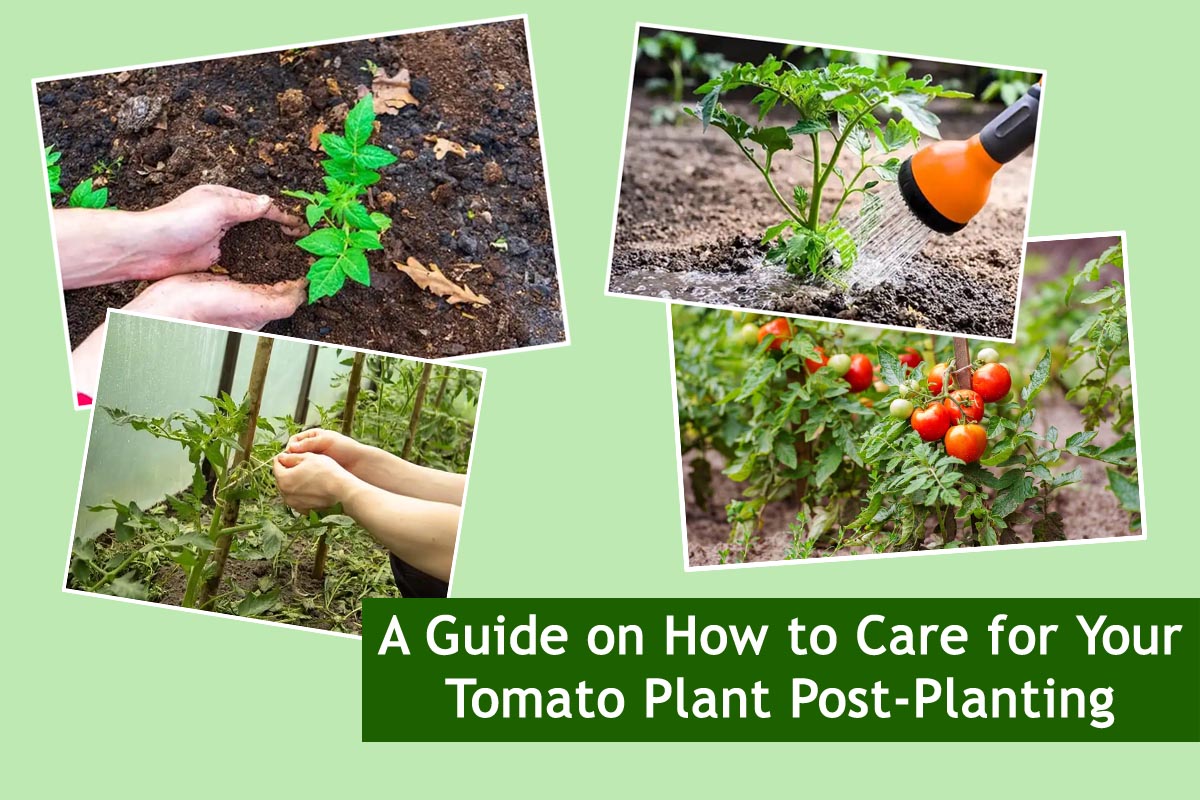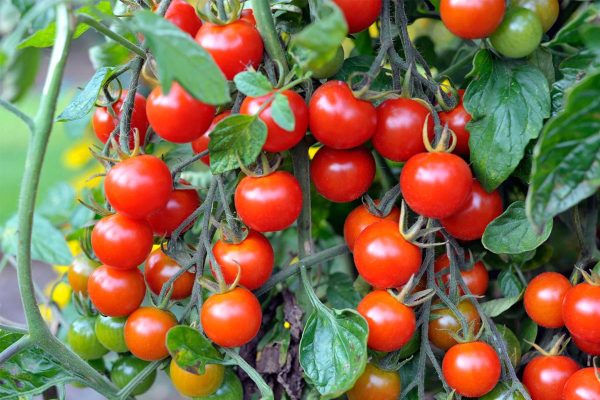
A Guide on How to Care for Your Tomato Plant Post-Planting
Tomatoes are a beloved addition to many home gardens, offering juicy, flavorful fruits that can be enjoyed fresh or cooked in a variety of dishes. However, growing healthy tomato plants requires more than just planting them in the ground and hoping for the best. To ensure a bountiful harvest, it’s essential to provide proper care to your tomato plants throughout their growth cycle, especially after planting. In this comprehensive guide, we’ll walk you through the essential steps and best practices for caring for your tomato plants post-planting.
Selecting the Right Location:
Choose a sunny spot:
Tomato plants thrive in full sunlight, so select a location in your garden that receives at least 6-8 hours of direct sunlight per day.

Ensure good drainage:
Avoid waterlogged soil by planting your tomatoes in well-draining soil or raised beds.
Consider spacing:
Tomato plants need adequate space to grow and spread out. Plant them at least 2-3 feet apart to allow for proper air circulation and prevent overcrowding.
Also Read This : Colorful Most Flowers and Long-Lasting: Top Flowering Plants for Every Season
Watering:
Water deeply:
After planting, give your tomato plants a thorough watering to help them establish their roots. Water deeply to encourage deep root growth rather than frequent shallow watering.

Monitor soil moisture:
Check the soil moisture regularly and water whenever the top inch of soil feels dry to the touch. Avoid overwatering, as it can lead to root rot and other problems.
Water at the base:
Direct the water at the base of the plants to avoid wetting the foliage, which can increase the risk of disease.
Mulching:
Apply mulch:
Mulching around your tomato plants helps retain moisture in the soil, suppresses weeds, and regulates soil temperature.

Use organic mulch:
Opt for organic materials such as straw, shredded leaves, or grass clippings for mulching. Apply a layer of mulch 2-3 inches thick around the base of the plants, leaving a few inches of space around the stem to prevent rotting.
Also Read This : Tomato Transplanting Tips: A Guide to Timing and Techniques for Successful Gardening in Both Beds and Containers
Fertilizing:
Start with a balanced fertilizer:
When planting your tomatoes, incorporate a balanced fertilizer into the soil to provide essential nutrients for healthy growth.

Side-dress as needed:
Throughout the growing season, monitor the growth of your tomato plants and side-dress with additional fertilizer as needed to support vigorous growth and fruit development.
Consider organic options:
Organic fertilizers, such as compost or aged manure, are excellent choices for feeding your tomato plants without the risk of chemical buildup in the soil.
Also Read This : Exploring the Diverse Papaya Varieties Cultivated in India: A Fruitful Journey
Supporting and Pruning:
Stake or cage your plants:
Tomato plants can become heavy with fruit, so providing support is essential to prevent them from sprawling on the ground and to keep the fruit off the soil, reducing the risk of rot and disease.

Prune suckers:
Regularly prune the suckers (the small shoots that emerge from the leaf axils) to encourage a single central stem and improve airflow around the plant, reducing the risk of disease and promoting larger, healthier fruits.
Also Read This : 9 Must-Plant Flowers for a Blooming Garden: Prepare for Summer Splendor
Pest and Disease Management:
Monitor for pests:
Keep an eye out for common tomato pests such as aphids, hornworms, and whiteflies. Remove any pests you find by hand or use organic insecticides as needed.

Practice good sanitation:
Remove any fallen leaves or fruit from the ground to reduce the risk of disease transmission. Rotate your tomato plants each year to prevent the buildup of soilborne diseases.
Be vigilant for signs of disease:
Watch for symptoms of common tomato diseases such as blight, wilt, and powdery mildew. If detected early, you may be able to control the disease with proper management techniques or fungicidal treatments.
Also Read This : Maximize Growth: Complete This Task in March for Fivefold Plant Growth!
Harvesting:
Know when to harvest:
Monitor your tomato plants regularly for ripe fruit. Tomatoes are ready to harvest when they reach full color and firmness, depending on the variety.
Handle with care:
When harvesting tomatoes, handle them gently to avoid bruising or damaging the fruit. Use sharp scissors or pruners to cut the fruit from the vine, leaving a small portion of the stem attached.
Also Read This : Boost Your Garden: Transforming Cow Dung into Potent Compost in 30-40 Days!
Caring for your tomato plants after planting is crucial for ensuring a successful harvest of delicious, homegrown tomatoes. By following the tips and techniques outlined in this guide, you can provide your tomato plants with the care they need to thrive, from watering and fertilizing to pest management and harvesting. With a little time and attention, you’ll be rewarded with a bountiful supply of juicy, flavorful tomatoes to enjoy all season long.
Also Read This : How to Achieve Bumper Tomato Yields: Choosing the Right Fertilizer




